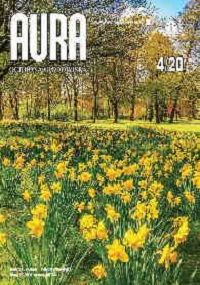
- Paragraph and the environment - Forest theft
Question: Has the stricter treatment of forest theft compared to other thefts disappeared due to the return to the PLN 500 limit dividing responsibility for crimes and property offenses? Forest inspector from Lower Silesia Answer: Yes - it has disappeared, but the question posed to me creates a good opportunity to refer to forest theft a bit more widely, also taking into account the history of legal regulation. In the interwar period, after the codification of criminal law carried out by the issue of the first Polish Penal Code on 11 July 1932 and, at the same time, a separate Law on misdemeanors, the Act of 14 April 1937 on forest and field damage appeared (Journal of Laws No. 30, item 224). It was a criminal act, which until then repealed the existing forest criminal provisions of the partitioning states, contained in the Russian Penal Code of 1903 and the relevant Prussian and Austrian laws, replacing them with their own solutions. The 1937 Act did not typify crimes but only offenses. - Permafrost and its impact on climate change
Permafrost contains huge amounts of organic carbon. If it is released, it will be an irreversible process with catastrophic consequences for human civilization. The thawing of eternal dreaminess can create better conditions for the exploitation of natural resources. On the other hand, however, this is a huge threat to infrastructure in this part of the world. Permafrost melting, which is already being observed, is taking place at an ever faster rate, is one of the factors with a huge impact on the planetary climate, and also entails dramatic and rapid changes in ecosystems. - Witch hunting
The complete elimination of ecological risk is not possible, and her attempt would have to resemble a witch hunt, a procedure that cannot be meaningfully implemented. Economists try to find an acceptable level of risk by examining whether its possible change requires a cost that is justified by the benefits. However, they must do valuations that are controversial - Hornbeam called iron tree
The common hornbeam Carpinus betulus L. is a tree belonging to the birch family, reaching up to a height of 25 m, whose trunk at the buttocks often has slatted lumps and until late age is covered with smooth, gray bark, with characteristic darker hollows (photo 1). The hornbeam's crown is dense, irregular and broomy with branches raised diagonally upwards. The leaves are egg-shaped, double-serrated, rounded at the base. Male and female cats appear on the same tree, and appear in April - May, after the appearance of the leaves (photo 2). Fruits are flat, ribbed nuts about 0.6 cm long, with characteristic three-flap wings favorable to spreading. Hornbeam fruits ripen at the end of September (Photo 3). This tree bears fruit abundantly every second year, and the fruits fall in the winter, but they germinate only in the spring. However, most of them eat forest mice and squirrels, for which they are a unique delicacy. - Competition "Ecological Master and Doctor"
The article presents the report on the course and results of the 6th edition of the "Ecological Master and Doctor" Competition, organized in 2019 by the Provincial Fund for Environmental Protection and Water Management in Łódź.
AURA Ochrona Środowiska (AURA Environmental Protection) - full list






